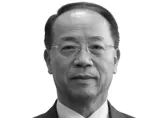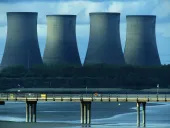What newcomers need to know about nuclear power programmes
By Dr Jong Kyun ParkNuclear newcomers’ desire for nuclear power has not decreased even after the accident at Fukushima Daiichi Nuclear Power Station in Japan. Many countries are either considering nuclear power or actively preparing their infrastructure for a possible nuclear power programme.
Three countries have even ordered their first nuclear power plants (NPPs), and two of these, the United Arab Emirates and Belarus, now have their first NPPs under construction - the first countries in nearly three decades.
As many as five countries could have their first reactors under construction in the next five years. North Africa, Southeast Asia, the Middle East, and Europe are all areas where countries are considering embarking on their first nuclear power programme. These are areas where social and economic growth is expected to create a greater demand for power in the coming years.
Initiating a nuclear power programme raises many questions. How do I start? Where will I find the people and the money to develop the programme? Is there a site with the right requirements and the necessary public support to proceed? And in light of Fukushima, is it safe?
The IAEA’s recommended approach to preparing nuclear power infrastructure is known as the ‘Milestones’ approach. Nuclear power infrastructure includes all the activities and arrangements needed to set up and operate a nuclear power programme.
The Milestones contains three phases and is holistic in approach. It covers 19 issues related to nuclear power infrastructure.
Phase 1 of the Milestones is all about making a decision to have a nuclear power programme. In this phase it is important for countries to understand its options and the implications of having nuclear power.
After a country has made a decision, it moves on to Phase 2, which includes assembling a team and assigning the roles and responsibilities for addressing the 19 issues so that it is ready to invite bids or sign a contract for the first nuclear power plant.
Phase 3 is when the construction and commissioning processes for the nuclear power plant take place.
It takes 10 to 15 years of preparation from the initial thinking, so even before a decision to pursue nuclear power is taken, to when the first nuclear power plant is connected to the grid, generating electricity.
Several common challenges among newcomers have been identified through the Integrated Nuclear Infrastructure Review (INIR) missions the IAEA has conducted since 2009.
These include: making a knowledgeable commitment to a nuclear programme in the form of a national decision, establishing legal and regulatory frameworks, ensuring funding and financing, building up human resources and developing management programmes.
A national decision is important because it is what gives a nuclear power programme “staying power” or sustainability, even with political changes within the country. A national decision should define the roles and responsibilities of the various players.
The IAEA recommends creating a NEPIO, or Nuclear Energy Programme Implementing Organization, in Phase 1.This could be a team within a ministry or a coordination mechanism among various stakeholders involved in the programme planning.
The role of the government in developing a new nuclear power programme is critical and must not be underestimated. The government is responsible for establishing the national policies related to spent fuel and waste, as well as the legislative and regulatory framework.
This involvement also includes the assurance of resources, both financial and human, to support the programme.
Establishing the legislative and regulatory frameworks for a nuclear power programme is very important and also a good way to assign roles and responsibilities.
Some countries think to address safety issues only through the regulatory framework, but only a comprehensive law guarantees a strong foundation for the nuclear power plant. This includes safety, security, safeguards, and liability.
For many of the newcomer countries, the nuclear power plant project is the largest industrial project and largest investment undertaken by the country. This makes financing a huge challenge.
Human resources development is another big challenge. How do you develop the human resources you need for the nuclear power plant project without having nuclear power experience? Countries are pursuing several different models.
Take the UAE for example. The UAE plans to rapidly build its national capabilities for its first nuclear power plant through “Emiratization.” The plan includes mixing senior advisors and international experts with support companies and national staff to allow for the efficient transfer of knowledge and ultimately the long-term sustainability of the national workforce.
Active stakeholder involvement is central to the success of new nuclear power programmes. Initiating this process early will not only help avoid long-term delays, but will also foster long-term support for the future of the programme. The Government, regulatory body, and owner/operator have distinct roles to play.
Management is also an important component of a successful nuclear power programme. Effective management and leadership will help an organization develop the necessary safety culture.
IAEA Director General Yukiya Amano has emphasized that Agency assistance to newcomers is a high-priority issue and that the Agency will continue to work with users of nuclear power, both new and experienced, to facilitate the exchange of experience and information in the area of nuclear power infrastructure development, and to ensure that this is done in an efficient, responsible and sustainable manner.
The IAEA helps the newcomers develop necessary infrastructure by providing publications, trainings, expert missions, fellowships, scientific visits and by connecting them with other countries to share experiences in building an infrastructure for nuclear power.
The IAEA recently published a catalogue of services on its website. This catalogue provides its Member States an integrated view of all of the assistance offered by the IAEA. Countries can identify the types of support available as it relates to the 19 different infrastructure issues.
The IAEA has also developed a new e-learning series to support distance learning by its Member States. The main objective is to bring to life the IAEA's guidance in responsible and sustainable infrastructure development by making it more accessible and interactive.
In conclusion, “newcomers” continue to move forward with the introduction of new nuclear power programmes. While they are currently facing -- and will continue to face -- new and unique challenges, the IAEA stands ready to provide support.
The IAEA also continues to encourage its Member States to work together to identify and share lessons learned and good practices that have emerged through the development of these programmes. Through this cooperation, the long-term sustainability of the safe, secure, and peaceful uses of nuclear energy can be ensured.




















 Advertise
Advertise







